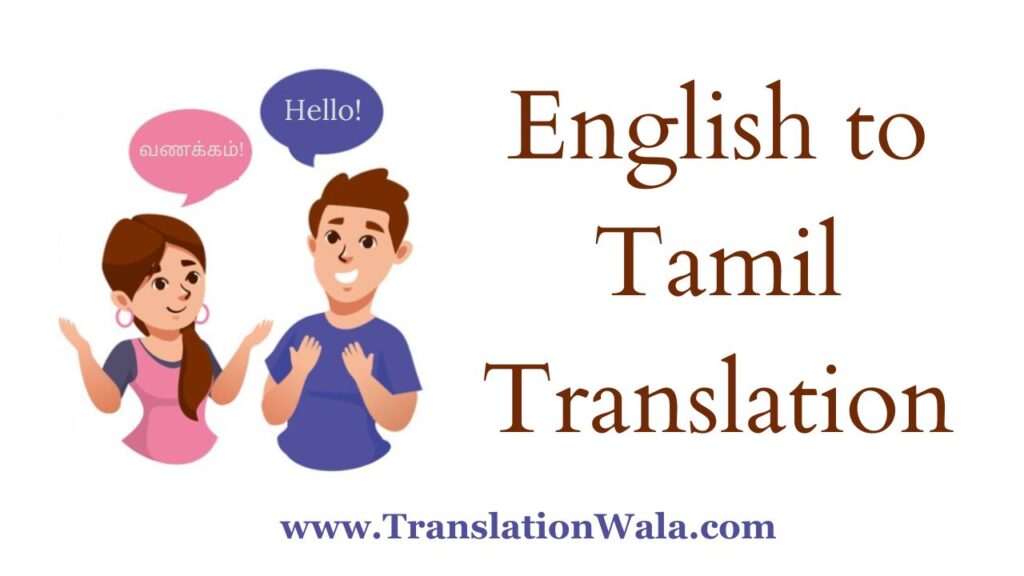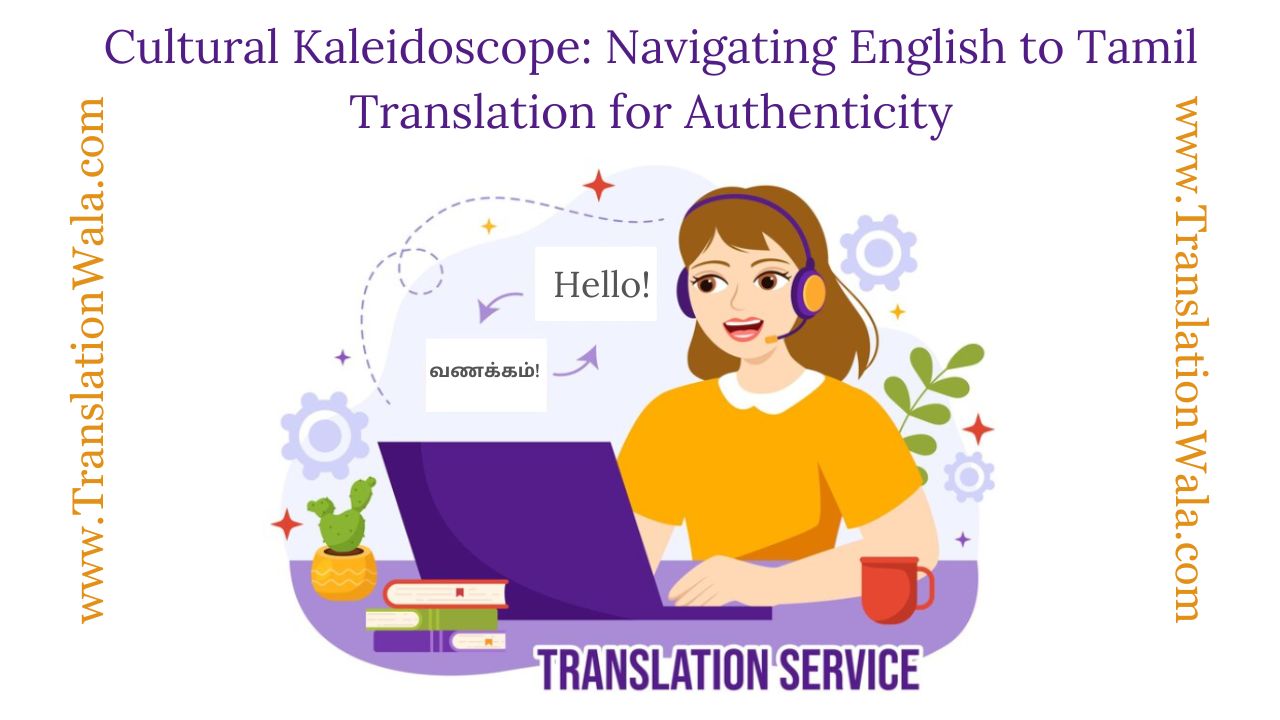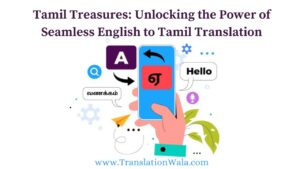Imagine being mesmerized by the way the colors and shapes move in a kaleidoscope. That’s what Tamil is all about—a language that is alive with history, full of subtle expressions, and like a fabric made with colorful cultural threads. It’s not just a matter of switching words when English to Tamil Translation. It’s like a careful dance through this culture mix, with accuracy as the dancer and each word as a smooth, deliberate step.
For people who don’t know either language, the difference between English and Tamil can seem like a huge ocean. English is straight and exact, like a sharp blade cutting meaning. It comes from Germanic roots and has become a world language. Tamil is a beautiful Dravidian language that is full of meanings and uncertainty. It’s like a river of feelings and different ways to understand things. The way words are said turns into a fun maze, with “pa” changing into “pha” and “ta” dancing with “tha.” There are pirouettes in sentence patterns, with verbs dancing to the end of the phrase and adjectives holding to words like fireflies to a dark night.
For us to get through this cultural maze and come out with a version that is both accurate and full of soul, we need to learn how to fit in with Tamil’s rich tapestry of culture.
Embracing the Nuances: Where Precision Meets Emotion
Tamil terms don’t just describe deeds; they also show feelings through colorful language. “I went” could be translated as either “podaen,” which means “to go,” or “poonaen,” which means “with purpose and intent.” Each word draws a different picture, changing the emotional scenery of the story in a subtle way. It is very important to understand these subtleties and pick the right tone, one that fits with the culture, in order to be genuine.
Befriending Ambiguity: Learning to Dance in the Gray
English likes clear-cut answers, but Tamil likes it when things aren’t clear-cut. Don’t be afraid to use metaphors and words that make you think. Accept the “theriyathae” (unknown) instead of trying to find a clear “don’t know.” Remember that beauty can be found in things that aren’t said, in the empty space where the reader’s mind can grow like a lotus flower in a rainy pond.
Also Read: Bridging Cultures: Navigating the Art of English to Punjabi Translation

Seeking Cultural Companions: Immerse Yourself, Translate with Insight
You’re not alone when you translate. Get to know the culture scene. Get to know the heart of Tamil by reading Bharathiyaar’s poems, listening to A.R. Rahman’s music, and getting lost in the exciting stories of Tamil movies. In tea shops, listen to talks that run like rivers, watch street shows that are full of life, and enjoy the pace of daily life. When you leave the safe confines of the book, these events become your guide, leading you toward reality.
Respecting the Rhythms: Where Words Become Music
Tamil sounds great. It has a special rhythm and tune to the way its words move. Never be afraid to change the order of words and let the sentence move around on the page. Remember that the right version doesn’t always shout or march. Sometimes it whispers or sways. There is a dance between the English text and the spirit of Tamil. The beat is just as important as the meaning.
Celebrating the Local: Weaving Proverbs and Idioms into the Tapestry
Tamil has a huge number of proverbs, phrases, and local references. Each one is a sparkling gem that shows how the culture works. Don’t be afraid to include them in your paper. A well-placed “adhu paaru” (wow, look at that!) can add a bit of local taste and make the reader feel more connected to the culture.
Letting Go of Perfection: Authenticity Lies in the Journey, Not the Destination
English to Tamil Translation is more of a journey than a technical practice. It’s an adventure through history, a talk with feelings, and a dance with the spirit of a language. Take on the task, enjoy the little things, and let the culture kaleidoscope show you the way. Remember that a real translation isn’t just words on a page; it’s a window into another world that you can experience with all of your senses.
Remember these steps the next time you go on this language adventure. Bring the music and culture of Tamil into your translation, and let it dance with the spirit of this old but lively language. Translation isn’t just a way to talk to people; it’s also a way to celebrate the beauty and variety of the human experience, one word at a time.



